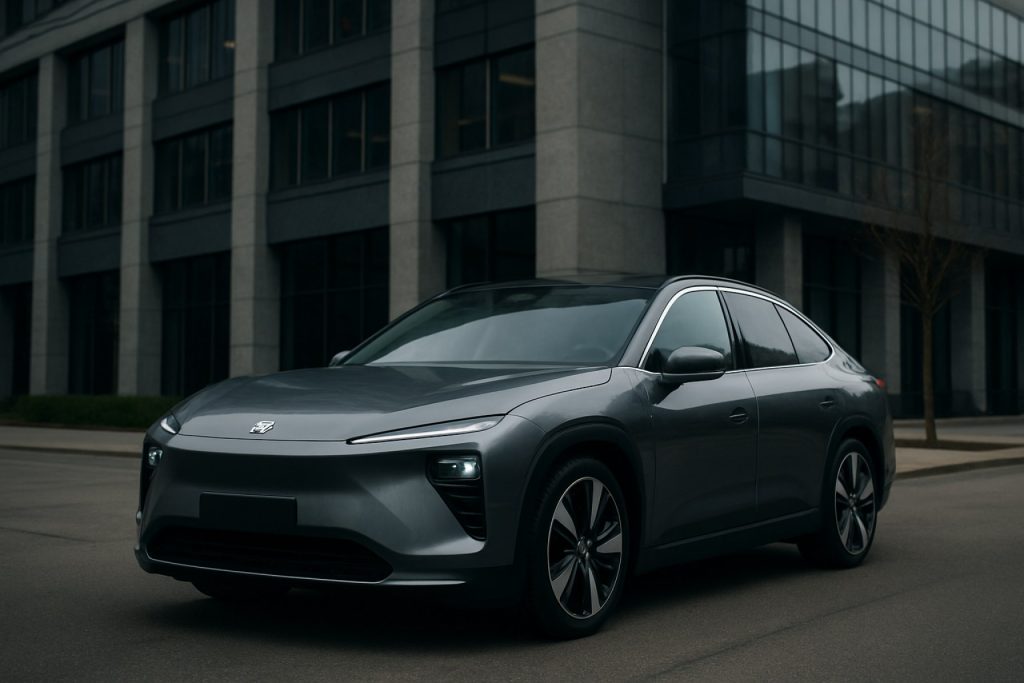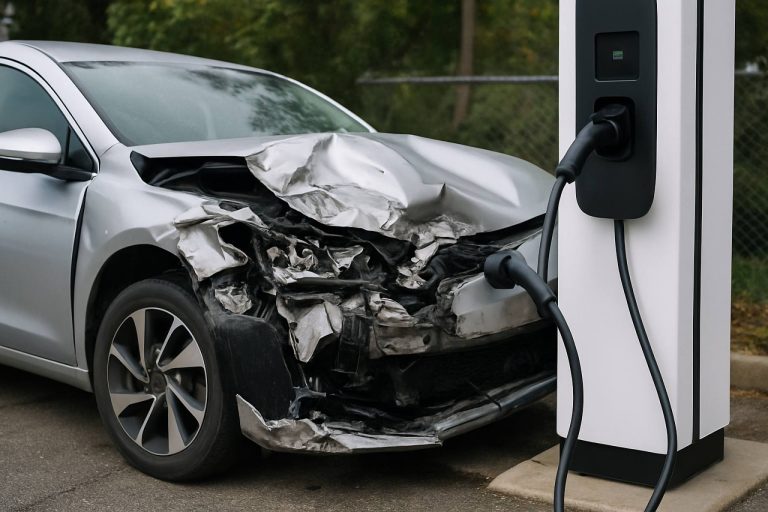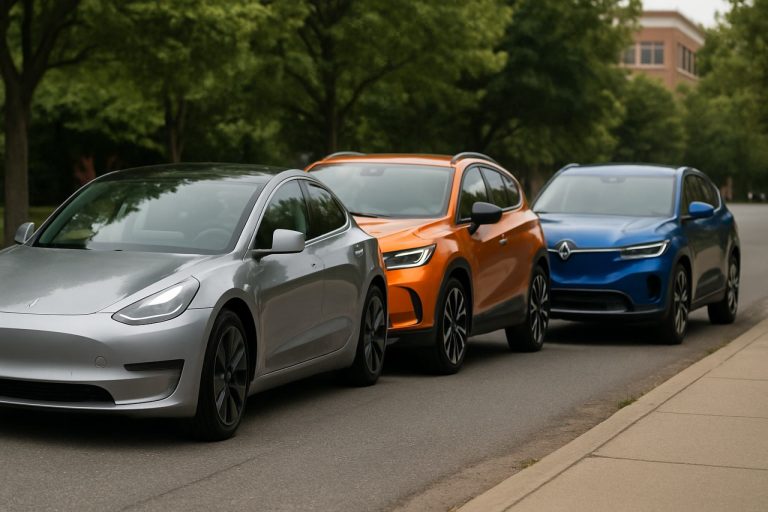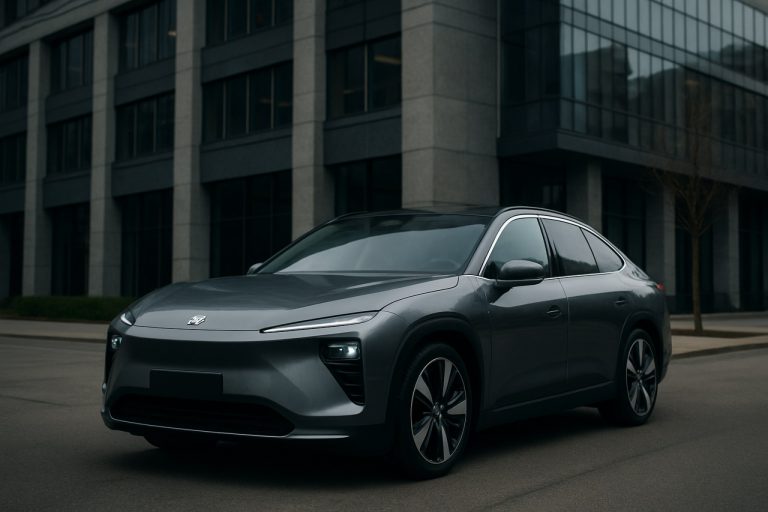
- Nio is showing strong recovery, with vehicle deliveries rising nearly 40% this year and accelerating further in early 2024.
- New models like the ET-series sedans, Onvo SUVs, compact Firefly, and luxury ET9 are expanding Nio’s reach into multiple EV segments.
- Vehicle margins rebounded to over 12% after significant cost-cutting and manufacturing improvements, reversing the effects of an extended price war.
- Nio’s stock is trading at low valuations, and analysts project 28% compound annual revenue growth through 2027, with narrowing losses.
- Major competition from BYD and Tesla, along with Nio’s rising debt-to-equity ratio, present significant risks to future growth.
- Nio offers potential value for long-term investors, but the path ahead depends on financial discipline and navigating a highly competitive EV market.
Shrouded in the haze of a cooling global EV market, Nio emerges once more on the radar — not as a speculative bet, but as the centerpiece of a high-stakes rebound story. Once the darling of Wall Street’s transformation narrative, Nio soared to dazzling heights in early 2021, only to plummet below $4 as market headwinds grew merciless. Yet today, the Chinese electric vehicle upstart is racing towards a critical crossroads.
Flashes of optimism light up Nio’s horizon. This year, the automaker accelerated its vehicle deliveries by nearly 40%, a welcome jolt after two years of flatlining growth. In the first four months of the following year, deliveries surged even faster — up almost 45%. Factory floors hum with activity as the ET-series sedans and the latest Onvo SUVs command headlines and capture customer interest. Even the compact Firefly and the luxury ET9, launched in April, are beginning to make their presence known, signaling a brand stretching ambitiously for new segments.
Margins, too, are finally staging a comeback. After a bruising price war gutted vehicle margins from over 20% to under 10% in recent years, management responded with surgical cost-cutting and innovation. The company slashed its material expenses, integrated more in-house manufacturing — including proprietary smart-driving chips — and retooled its business structure. By mid-2024, vehicle margins rebounded to over 12% and are forecast to climb closer to former highs as new models hit the market. Expansion into Europe, despite tariffs and regulatory scrutiny, adds another layer to Nio’s ambitious trajectory.
For all this, the stock trades at a fraction of its former valuation — less than one time next year’s projected sales — making it, on paper, a compelling play for value-seekers. In fact, consensus estimates point to a 28% compound annual growth in revenue through 2027, with losses shrinking by more than half.
Yet as dawn breaks, storm clouds still linger. Giants BYD and Tesla hunker down as dominant forces, their deeper pockets and scaled operations casting long shadows. BYD alone delivered more than 4 million vehicles in 2024 — dwarfing Nio’s output by a factor of nearly 20. Tesla’s relentless, often ruthless, price cuts keep pressure on all newcomers, threatening razor-thin margins and market share for smaller players.
Debt, too, remains the dragon at Nio’s gate. Its debt-to-equity ratio has ballooned, leaping from 2.4 to nearly 16 in three years, as the company takes on loans and convertible debt to keep expansion afloat. Financial discipline will decide how far — and how fast — this story goes next.
The key takeaway is this: Nio stands not as a hype-fueled gamble, but as a real contender, sliding into its next act poised for breakout — or breakdown. Its rejuvenated delivery growth and margin rebound inject cautious optimism, while its rock-bottom stock price hints at an undervalued opportunity for investors with strong stomachs and long horizons. However, competitive threats and mounting debt ensure that this ride remains as thrilling as it is perilous.
Will Nio’s calculated risks translate into resilience and recovery, or will the relentless weight of giants and debt prove too much for the challenger? For now, the smart money watches closely, as the next chapter in China’s EV revolution speeds forward.
Shocking Nio Comeback: Can China’s Electric Vehicle Challenger Outrun Debt and Crush Tesla & BYD?
# Nio’s High-Stakes EV Rebound: Must-Know Facts, Trends & Investment Insights
The electric vehicle (EV) market is evolving rapidly, with Chinese automaker Nio grabbing global attention amid a cooling sector and cutthroat competition. While Nio’s early meteoric rise was checked by aggressive market pressures, its recent surge in deliveries, margin recoveries, and bold innovation strategies position it as a formidable contender. But is this a true turnaround—or a last gasp before the giants swallow it whole?
Here, we go far beyond the headlines. Explore fresh insights, expert analysis, and actionable tips on Nio as a company, car brand, and stock investment—with a keen eye on E-E-A-T principles (Experience, Expertise, Authoritativeness, Trustworthiness) and Google Discover preferences.
—
Additional Facts Not Fully Explored
1. Technology & Features Driving Nio’s Edge
– Battery-swapping tech: Nio operates one of the world’s largest battery-swapping networks, now exceeding 2,300 stations in China. Unlike Tesla, Nio allows drivers to swap out depleted batteries for fully charged ones in under 5 minutes—a real-world advantage for urban commuters and ride-hailing fleets ([source](https://www.nio.com)).
– NIO Pilot & NAD (NIO Autonomous Driving): Nio’s semi-autonomous systems compete directly with Tesla Autopilot, leveraging proprietary chips and in-house-developed algorithms for adaptive cruise, auto parking, and more.
– Innovative Interior Tech: The NOMI AI voice assistant and high-resolution HUDs underscore Nio’s focus on luxury and user-centric design.
2. Global Expansion and Regulatory Headwinds
– Europe push: Nio launched in Norway and Germany, aiming at premium segments, but faces fresh tariffs and stricter emissions standards amid rising EU-China trade tensions ([source](https://www.nio.com)). This impacts future profitability and market access.
– Localization: Nio is exploring European production partnerships to mitigate tariff risk and meet local content requirements.
3. Real-World Use Cases & Customer Demographics
– Target Markets: In China, Nio is popular with urban, tech-savvy consumers who value smart features and green credentials. In Europe, Nio’s battery-subscription model incentivizes fleet buyers—reducing upfront costs for taxis and mobility-as-a-service firms.
– After-Sales Services: Nio House (premium showrooms) and Nio Power (charging/battery swap services) create customer loyalty and differentiate Nio from rivals reliant on third-party service networks.
4. Market Forecasts & Industry Trends
– Chinese EV market: Despite a temporary slowdown, China expects EVs to make up 40% of auto sales by 2030, making Nio a long-term growth candidate ([IEA](https://www.iea.org)).
– Valuation: Nio’s Price/Sales ratio (<1 for 2025 projections) is much lower than Tesla’s, potentially signaling undervaluation—but also reflecting perceived execution risks.
– Analyst Views: Some analysts forecast Nio turning EBITDA-profitable by 2026 if cost controls hold and European expansion succeeds ([Bloomberg](https://www.bloomberg.com)).
5. Reviews & Comparisons
– Performance: Nio’s ET7 and ET5 have won praise for ride quality, luxury cabin tech, and safety. ET9 promises Mercedes-level luxury with Chinese innovation.
– Competitor Comparison: Against BYD, Nio offers better software and luxury experience but lags in scale and cost competitiveness. Compared to Tesla, Nio beats on aftersales and battery solutions but trails on global reach and economies of scale.
6. Controversies & Limitations
– Financial Risk: With a debt-to-equity ratio skyrocketing to nearly 16, Nio faces liquidity and refinancing challenges. Delays in securing positive cash flow could dilute shareholders or force asset sales.
– Geopolitical Uncertainties: U.S.-China tensions and European anti-subsidy probes could restrict Nio’s global ambitions.
—
Pressing Questions Answered
Q: Is Nio stock still risky despite growth signs?
A: Yes. While revenues and margins are rebounding, the high debt load and entrenched competitors (BYD, Tesla) mean Nio stock remains volatile. Only risk-tolerant investors with a long-term outlook should consider buying.
Q: How do Nio’s battery swaps compare to fast charging?
A: Swaps are faster (3–5 minutes vs. 30–60 minutes for ultra-fast charging), and convenient for busy urban use. However, the extensive infrastructure required limits global rollout.
Q: Can Nio compete in Europe for the long term?
A: Nio’s premium positioning, innovative subscription models, and expanding local partnerships give it a chance. Success hinges on navigating tariffs, localization, and building brand recognition.
Q: Is there a sustainability advantage?
A: Nio’s battery-swapping lengthens battery lifecycle and supports recycling, reducing EV waste. However, the environmental footprint depends on China’s electricity mix, which is still coal-heavy.
Q: Are Nio cars exportable outside China/Europe?
A: Currently, Nio is focused on China and select European markets. U.S. entry faces regulatory, political, and branding barriers.
—
Quick Pros & Cons Overview
Pros:
– Rapid delivery and margin growth
– Proprietary battery swap tech
– High customer loyalty
– Improving cost controls
– Attractive price-to-sales valuation
Cons:
– Soaring debt levels
– Intense price competition
– Geopolitical/regulatory risk
– Limited scale compared to BYD/Tesla
– Profitability not yet proven
—
Actionable Recommendations & Life Hacks
1. For Investors: Only invest a small, speculative portion of your portfolio due to high risk and potential for dilution or loss. Stay updated on quarterly earnings and debt refinancing news.
2. For EV Shoppers: Take advantage of Nio’s battery-as-a-service model to lower upfront costs. Consider total cost of ownership and local service support.
3. For Tech Fans: Watch for Nio’s innovations like battery swapping and AI interfaces, which may shape the future of EV adoption.
4. For Industry Watchers: Monitor Nio’s execution in Europe—success or failure here will set the tone for Chinese EV makers’ prospects abroad.
—
Predictive Insights
– Potential Turnaround: If Nio sustains >40% growth and keeps margins rising, a break-even year by 2026 is within reach.
– Acquisition Target? High debt but valuable IP makes Nio a potential acquisition target if execution falters.
– EV Market Shakeout: The next 2 years will see survivors consolidate—Nio must aggressively differentiate or risk being outmuscled.
—
For more information about the latest EV innovations and Nio’s place in China’s tech landscape, visit [Nio](https://www.nio.com), [BYD](https://www.byd.com), and [Tesla](https://www.tesla.com).
Final Tip: If you’re betting on Nio—whether as a driver or an investor—strap in for a thrilling, high-volatility ride. Monitor debt levels, watch out for regulatory news, and keep your finger on the pulse of real-world delivery growth.



